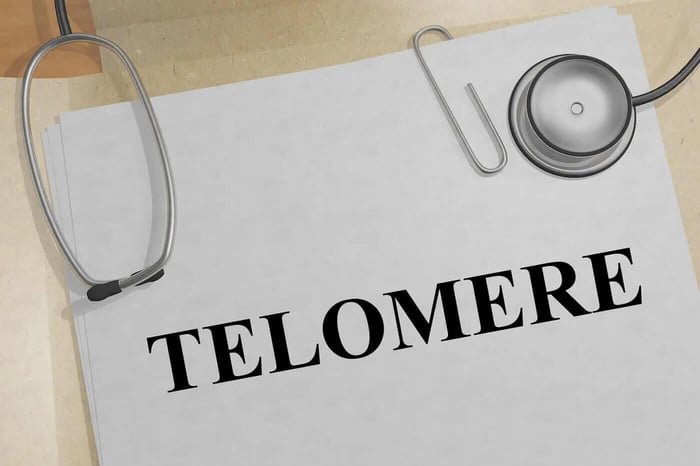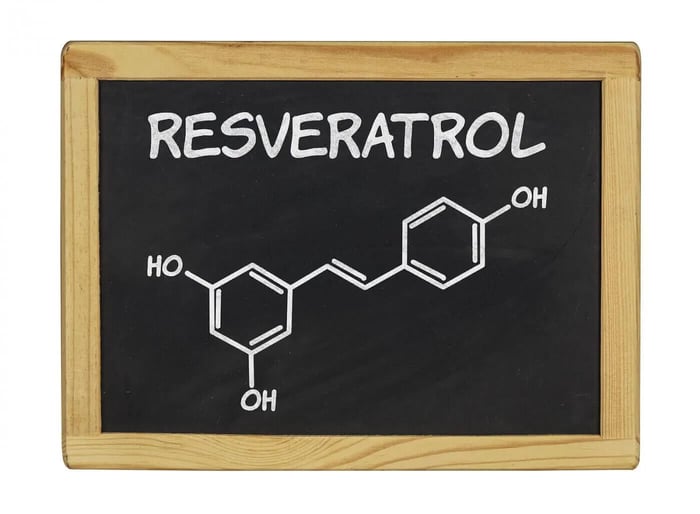Archives: Your Complete Guide to Organized Information Management
Archives represent the cornerstone of information preservation and knowledge management. Whether you're managing personal documents, corporate records, or digital content, understanding how archives work transforms chaos into clarity. This comprehensive guide explores everything about archives, from basic principles to advanced strategies that help you build systems that last.
What Are Archives and Why Do They Matter?
Archives serve as organized collections of records, documents, and materials preserved for their historical, legal, or informational value. Unlike simple storage, archives follow specific principles that ensure information remains accessible, authentic, and meaningful over time. Organizations worldwide rely on archives to maintain institutional memory, comply with regulations, and support decision-making.
The power of well-maintained archives extends beyond mere storage. They create pathways to understanding past decisions, tracking progress, and building upon previous knowledge. When you implement effective archive systems, you unlock the ability to retrieve critical information instantly, protect valuable assets, and create lasting value for future generations.
Essential Components of Modern Archives
Physical Archives
Traditional physical archives remain vital for preserving original documents, photographs, and artifacts. These tangible collections require specific environmental controls, including temperature regulation, humidity management, and protection from light damage. Successful physical archives incorporate:
- Climate-controlled storage spaces that maintain optimal preservation conditions
- Acid-free folders and boxes preventing chemical deterioration
- Detailed cataloging systems enabling quick location of specific items
- Security measures protecting valuable or sensitive materials
- Disaster recovery plans safeguarding against unexpected events
Digital Archives
Digital archives revolutionize how we store and access information. These electronic repositories offer unprecedented search capabilities, remote access, and space efficiency. Key elements of digital archives include:
- Metadata standards ensuring consistent documentation
- File format specifications promoting long-term accessibility
- Backup protocols protecting against data loss
- Access controls managing user permissions
- Migration strategies adapting to technological changes
Building Your Archive Strategy
Creating effective archives requires thoughtful planning and systematic implementation. Start by assessing your current information landscape and identifying materials worth preserving. Consider both immediate needs and long-term goals as you develop your archival framework.
Step 1: Conduct an Information Audit
Begin your archive journey by cataloging existing materials. Document what you have, where it's stored, and its current condition. This audit reveals gaps, redundancies, and opportunities for improvement. Pay special attention to unique or irreplaceable items that deserve priority treatment.
Step 2: Establish Selection Criteria
Not everything belongs in archives. Develop clear criteria for determining what to preserve. Consider factors like historical significance, legal requirements, research value, and organizational importance. Your selection policy guides consistent decision-making and prevents archive bloat.
Step 3: Design Your Classification System
Organize archives using logical, scalable classification schemes. Whether you choose alphabetical, chronological, or subject-based systems, consistency matters most. Create hierarchical structures that accommodate growth while maintaining navigability.
Step 4: Implement Preservation Measures
Protect archived materials through appropriate preservation techniques. Physical items need proper housing and environmental controls. Digital files require regular integrity checks and format migrations. Budget for ongoing preservation activities that maintain archive viability.
Step 5: Create Access Protocols
Balance preservation needs with user access. Develop policies governing who can access archives, under what conditions, and through which channels. Consider creating different access levels for various user groups while maintaining security and preservation standards.
Archives Best Practices for Different Industries
Corporate Archives
Businesses leverage archives to preserve institutional knowledge, support legal compliance, and maintain brand heritage. Corporate archives typically include financial records, strategic documents, product development files, and marketing materials. These collections support decision-making by providing historical context and precedent.
Academic Archives
Educational institutions maintain archives documenting scholarly research, institutional history, and student life. These repositories support teaching, learning, and research while preserving unique collections that attract scholars worldwide. Academic archives often include manuscripts, research data, administrative records, and special collections.
Government Archives
Public sector archives ensure transparency, accountability, and citizen access to government information. These repositories preserve legislative records, administrative documents, and historical materials that document governmental activities and societal development.
Personal Archives
Individuals create archives to preserve family history, creative works, and personal documentation. These intimate collections capture life stories, genealogical information, and cultural heritage for future generations. Personal archives might include photographs, letters, journals, and digital memories.
Technology Transforming Archives
Emerging technologies revolutionize how archives operate and serve users. Artificial intelligence enables automated metadata generation and content analysis. Machine learning improves search capabilities and pattern recognition. Blockchain technology offers new possibilities for ensuring authenticity and tracking provenance.
Digitization Initiatives
Converting physical materials to digital formats expands access while preserving originals. Modern scanning equipment captures high-resolution images that reveal details invisible to the naked eye. Optical character recognition transforms printed text into searchable data, unlocking new research possibilities.
Cloud Storage Solutions
Cloud-based archives provide scalable storage, enhanced security, and global accessibility. These platforms offer automated backup, version control, and collaboration features that traditional storage cannot match. However, careful vendor selection and data governance remain essential.
Virtual Reality Applications
Immersive technologies create new ways to experience archival materials. Virtual exhibitions bring collections to life, while augmented reality overlays historical information onto physical spaces. These innovations make archives more engaging and accessible to diverse audiences.
Common Archive Challenges and Solutions
Space Limitations
Physical storage constraints challenge growing archives. Solutions include off-site storage facilities, collaborative repositories, and selective digitization programs. Compact shelving systems and vertical storage maximize available space while maintaining accessibility.
Budget Constraints
Limited funding affects preservation activities and technological upgrades. Creative approaches include grant writing, partnership development, and volunteer programs. Prioritizing high-value materials and phased implementation helps stretch resources further.
Staff Expertise
Specialized knowledge requirements challenge smaller archives. Professional development programs, mentorship relationships, and collaborative networks build necessary skills. Online training resources and professional associations provide ongoing education opportunities.
Format Obsolescence
Technological change threatens digital archive accessibility. Migration strategies, emulation software, and format registries help maintain usability. Regular technology assessments identify at-risk formats requiring intervention.
Future of Archives
Archives continue evolving to meet changing user expectations and technological possibilities. Increased emphasis on user experience design makes archives more intuitive and engaging. Community partnerships expand collection scope and cultural representation. Sustainability initiatives address environmental impacts while ensuring long-term preservation.
The integration of archives with other information systems creates seamless research environments. Linked data initiatives connect dispersed collections, revealing new relationships and insights. Mobile applications bring archives directly to users, supporting location-based experiences and personal research.
Getting Started with Your Archive Project
Beginning an archive project feels overwhelming, but breaking it into manageable steps creates momentum. Start small with a pilot project that demonstrates value and builds support. Document your processes to create reproducible workflows. Celebrate milestones that showcase progress and impact.
Connect with existing archive communities for guidance and support. Professional organizations offer resources, training, and networking opportunities. Online forums provide peer support and problem-solving assistance. Local archives might offer tours or consultations that inform your approach.
Remember that perfect archives don't exist. Focus on continuous improvement rather than perfection. Each step forward preserves valuable information and creates opportunities for discovery. Your archive efforts today shape tomorrow's understanding and appreciation of our shared heritage.
Archives Resources and Tools
Successful archive management relies on appropriate tools and resources. Collection management systems streamline cataloging and tracking. Preservation supplies protect materials from deterioration. Reference management software organizes research and citations. Digital asset management platforms handle large-scale digital collections.
Professional standards guide consistent practice across institutions. Descriptive standards ensure interoperability and resource sharing. Preservation guidelines inform conservation decisions. Access policies balance openness with protection. These frameworks provide tested approaches that improve outcomes.
Educational resources support ongoing learning and skill development. Webinars address emerging topics and technologies. Conferences facilitate knowledge exchange and networking. Publications share research findings and case studies. Certification programs validate professional competencies.
Measuring Archive Success
Effective archives demonstrate value through measurable outcomes. Usage statistics track researcher engagement and collection relevance. Preservation assessments monitor collection condition and intervention effectiveness. User satisfaction surveys identify service improvements. Cost-benefit analyses justify resource allocation.
Success metrics vary by archive type and mission. Academic archives might prioritize research citations and student engagement. Corporate archives could focus on decision support and brand heritage preservation. Personal archives value family connections and memory preservation. Choose metrics aligned with your specific goals and stakeholder needs.
Regular evaluation drives continuous improvement. Annual reviews assess progress against objectives. Stakeholder feedback identifies emerging needs. Environmental scanning reveals trends affecting future operations. This ongoing assessment ensures archives remain relevant and valuable.
Frequently Asked Questions About Archives
What makes archives different from regular storage?
Archives go beyond simple storage by implementing systematic organization, preservation standards, and access protocols. While storage simply holds items, archives actively manage materials to ensure long-term preservation, authentic documentation, and meaningful access. Archives follow professional standards for arrangement, description, and preservation that maintain both physical integrity and intellectual context. This systematic approach enables researchers to find relevant materials efficiently while ensuring information remains accessible for future generations.
How do I start creating archives for my organization?
Begin your organizational archives by conducting a thorough assessment of existing materials and identifying preservation priorities. Start with a pilot project focusing on high-value materials that demonstrate clear benefits. Develop basic policies covering selection criteria, access guidelines, and preservation standards. Invest in appropriate storage supplies and environmental controls. Create simple but consistent cataloging procedures that can scale with growth. Connect with professional archive organizations for guidance and training opportunities. Remember that successful archives develop incrementally, so focus on establishing solid foundations before expanding scope.
What are the costs associated with maintaining archives?
Archive costs include initial setup expenses and ongoing operational requirements. Initial costs cover storage equipment, preservation supplies, cataloging systems, and environmental controls. Ongoing expenses include staff time, utilities for climate control, preservation treatments, technology updates, and access services. Digital archives require server space, backup systems, and periodic format migrations. However, archives often generate cost savings by improving information retrieval efficiency, reducing duplication, and supporting better decision-making. Many organizations find that archive benefits far outweigh costs when considering risk mitigation, compliance support, and knowledge preservation value.
How do digital archives ensure long-term accessibility?
Digital archives maintain long-term accessibility through multiple strategies including format standardization, regular migration, and comprehensive documentation. Archives use open, well-documented file formats that resist obsolescence. Regular integrity checking ensures files remain uncorrupted. Migration programs convert files to current formats before old ones become inaccessible. Detailed metadata preserves context and technical requirements. Multiple backup copies in different locations protect against data loss. Some archives also maintain legacy hardware and software for accessing obsolete formats. These combined approaches create resilient systems that preserve digital information across technological changes.
What skills do archive professionals need?
Archive professionals combine technical expertise with strong organizational and communication abilities. Core competencies include understanding preservation principles, cataloging standards, and access systems. Digital archives require technology skills including database management, digital preservation, and metadata standards. Professionals need research skills to understand collection contexts and user needs. Communication abilities support reference services, instruction, and advocacy. Project management skills enable successful initiatives and resource optimization. Many archivists also develop subject expertise relevant to their collections. Continuous learning remains essential as technologies and professional standards evolve.
How can archives support research and education?
Archives provide primary source materials that enable original research and authentic learning experiences. Researchers use archives to uncover new information, verify facts, and develop fresh interpretations. Students engage with historical documents that bring subjects to life beyond textbook summaries. Archives support dissertation research, scholarly publications, and creative projects. Educational programs include class visits, workshops, and online exhibitions that develop critical thinking and research skills. Digital archives expand access through online catalogs, digitized collections, and virtual reference services. These resources transform learning by connecting users directly with historical evidence and cultural heritage.
What role do archives play in preserving cultural heritage?
Archives serve as cultural memory institutions that preserve diverse voices, experiences, and traditions for future generations. They document community histories, artistic expressions, and social movements that might otherwise disappear. Archives collect materials representing different cultural groups, ensuring inclusive historical records. These collections support cultural identity, genealogical research, and community pride. Archives also preserve intangible heritage through oral histories, performance recordings, and cultural practice documentation. By making these materials accessible, archives enable cultural transmission, scholarly research, and public understanding. This preservation work strengthens communities and enriches our collective human story.
How do archives handle sensitive or restricted materials?
Archives balance preservation responsibilities with privacy, security, and ethical considerations through carefully developed access policies. Restricted materials might include personal information, confidential business records, or culturally sensitive items. Archives implement tiered access systems where different user groups receive appropriate permissions. Time-based restrictions allow materials to become available after privacy concerns diminish. Redaction procedures protect sensitive information while enabling partial access. Some archives require research agreements or ethics reviews for sensitive collections. Staff receive training on handling confidential materials and maintaining security protocols. These measures ensure archives fulfill preservation missions while respecting privacy rights and cultural protocols.
What are the career opportunities in archives?
Archive careers offer diverse opportunities across multiple sectors and specializations. Traditional positions include archivists, preservation specialists, and reference librarians in cultural institutions, corporations, and government agencies. Digital archives create roles for metadata specialists, digital preservation managers, and systems administrators. Specialized positions focus on specific formats like audiovisual materials, photographs, or electronic records. Consulting opportunities serve organizations developing archive programs. Education roles include teaching archive studies and conducting professional workshops. Many professionals combine archive work with related fields like records management, museum studies, or digital humanities. Career advancement leads to management positions, subject specializations, or independent consulting practices.
How are artificial intelligence and machine learning impacting archives?
Artificial intelligence and machine learning technologies transform archive operations through automated processing, enhanced discovery, and predictive preservation. AI-powered transcription converts handwritten documents and audio recordings into searchable text. Machine learning algorithms identify patterns in large collections, revealing hidden connections and research opportunities. Computer vision technology analyzes photographs and films, generating descriptive metadata automatically. Natural language processing improves search interfaces, understanding user intent beyond keyword matching. Predictive models identify at-risk materials requiring preservation intervention. These technologies don't replace human expertise but amplify capabilities, allowing archivists to focus on complex tasks requiring judgment and interpretation while automation handles routine processing.
For specific archival information about resveratrol research and developments, visit the dedicated Resveratrol Archives section, which contains comprehensive historical documentation and research updates in this specialized field.






